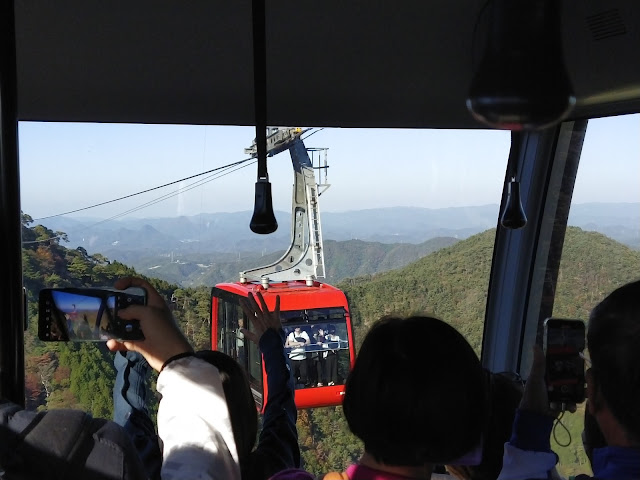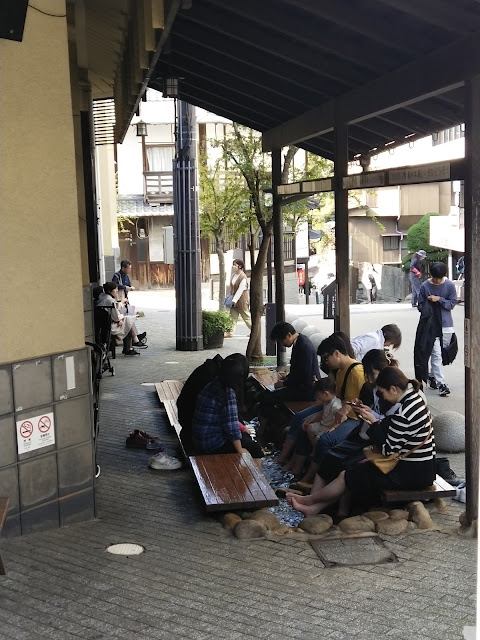Back to my recent Singapore trip: one of the new places I visited was this -
That's the new Peranakan Museum, housed in a old private school building, which makes for a very nice interior too:
As for the term Peranakan, one site explains:
In Singapore today, the term “Peranakan” generally refers to a person of mixed Chinese and Malay/Indonesian heritage. Many Singapore Peranakans trace their origins to 15th-century Malacca, where their ancestors were thought to be Chinese traders who married local women. Peranakan men are known as baba, while the women are known as nonya (or nyonya).1 From the second half of the 19th century to the mid-20th century, Peranakans were also known as the Straits Chinese, as they were born in the Straits Settlements.2 While some Peranakans have retained their cultural practices, many have assimilated into the larger Chinese community today.
Peranakan in Indonesian and Malay means the uterus or womb, or someone from a mixed marriage between a local and a foreigner.3 Not all Peranakans are of Chinese ancestry.4 Non-Chinese Peranakans in the early 20th century include the Bugis Peranakans, Arab Peranakans and Java Peranakans.5 In the Straits Settlements, there was also a small but significant community of Peranakan Indians known as Chitty Melaka.6 The origins of the Peranakan Indians were said to have traced to around the same time as the Peranakan Chinese, when Tamil merchants began marrying local women.7 The Jawi Peranakan community was another notable Peranakan group of non-Chinese descent, comprising Straits-born Muslims of mixed Indian (especially Tamil) and Malay parentage.
The impression one gets from the museum is that a lot of what was distinctive about Peranakan culture was to do with the aesthetics of how they lived: their sense of style in relation to furniture, ceramics and dress, as well as their food and things like marriage traditions. Without wanting to sound sexist, this makes for a museum which I reckon has a particular appeal to women. Certainly, the guided tour group I was with had about a 4:1 ratio of women to men. But that's fine - I can be very impressed with exquisite detail in things like old hand crafted furniture, and ceramics in particular. (The love the Japanese have for ceramics is also one of the most appealing and distinctive things to look into when visiting there.)
I mean, how can you not admire the detail in these Peranakan pieces:
This one, we were told, is a (particularly large) spittoon that women playing cards would use while chewing betel nut (I didn't realise that habit had been a thing in Singapore, and you apparently can still buy betel leaf in Little India):
There is something I find very pleasing about the colour and patterns typical in this style, even if it tends to feature pink and pastels and feel somewhat feminine because of that.
This distinctive type of pottery, unique to South East Asia, typifies the blended culture of the Chinese Peranakan communities in Penang, Melaka and Singapore. Once underrated by ceramics experts for its inferior quality and over-gaudy style, Nyonya ware has finally come into its own and is now considered highly collectible – with a hefty price tag to boot!
Nyonyaware uses the famille rose enamelling technique, although its decorative features are exclusive to the Straits and are quite distinct from other examples of Chinese ceramics of this style, which were usually more ornamental pieces. Straits Ceramics were intended for use at the family dining table on special occasions, and the pieces are entirely functional: bowls, teacups, teapots, spoons, plates, and lidded containers such as the kamcheng and katmau. They were commissioned from China by wealthy Peranakan families on the occasion of their daughters’ weddings; many contain specifically requested motifs or incorporate the family name, making them unique pieces of family history. Although blue and white Swatow ware was used for everyday purposes, the highly decorated famille rose ware took pride of place for fine dining.
Most ascribe Jingdezhen as the place of production for Straits Ceramics because that was where the finest examples of Famille Rose pottery were made, but experts have challenged this view. Shards of Straits-style crockery have never been found in the area. It is more likely that Peranakan families ordered their porcelain wedding sets from humbler kilns in Fukien province, and that these are actually examples of coloured Swatow ware (now usually referred to as Zhangzhou ware) using the enamel famille rose technique, but of inferior production....
Even the Japanese made some:
Some Straits porcelain was even Japanese made, for there was a time when Japan supplied these colourful ceramics to South East Asia. Japanese potters made exact copies, even down to Chinese stamps, and are difficult to distinguish other than by their softer shades of pastel. It is unclear whether Japan was trying to break into the overseas ceramics market or whether they were filling in the demand when wars in China disrupted production. No doubt it was probably a little bit of both!Apparently, given that it is no longer produced, the antique trade in this style of ceramics has taken off. It was only produced in a relatively short window:
As the window to Peranakan culture was open for only 150 to 200 years, Wong says only its ware that was made between 1856 and 1945 is identified as such. “These wares are generally identified on the basis of their period and origin of production, distinct motifs, colour combination and areas of distribution in Southeast Asia.How's this for a nice dining set:
“The earliest Nyonya ware was generally thought to have been made in the era of Emperor Tongzhi (April 27, 1856, to Jan 12, 1875) in China. And production is thought to have ceased after World War II (1939 to 1945) due to the declining demand in Southeast Asia, particularly in the former Straits Settlements of Penang, Melaka and Singapore, where the main Baba Nyonya communities were established.”
And how is this for a fancy bed for the wedding night:
The guide said that wedding customs included putting a hen and rooster under the bed, and the first to emerge indicated the sex of the firstborn child. Also, the page boy would roll over the bed three times, to encourage the birth of a son. (And that Lee Kwan Yew counted as Peranakan, and was of an age where he had probably performed that role as a boy.)
The Museum is not huge, but particularly with a guide, it was an educational and interesting way to avoid the daytime heat for a few hours. Recommended.






















































